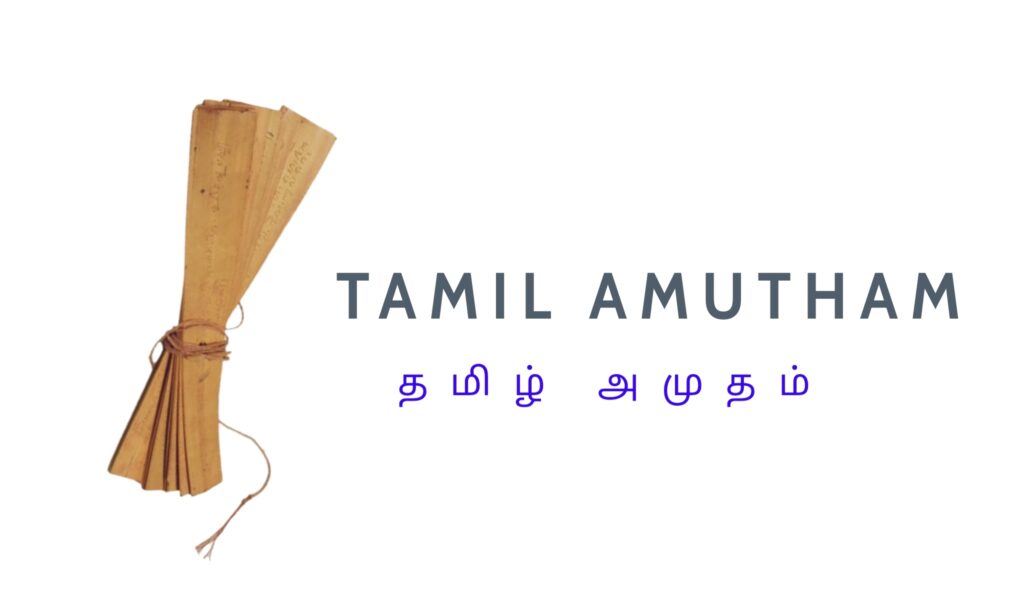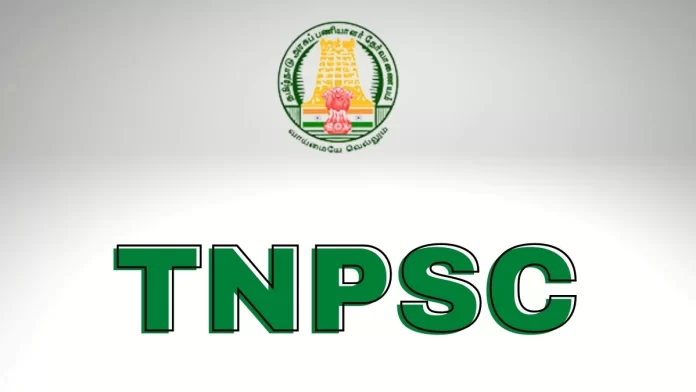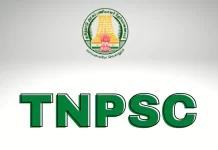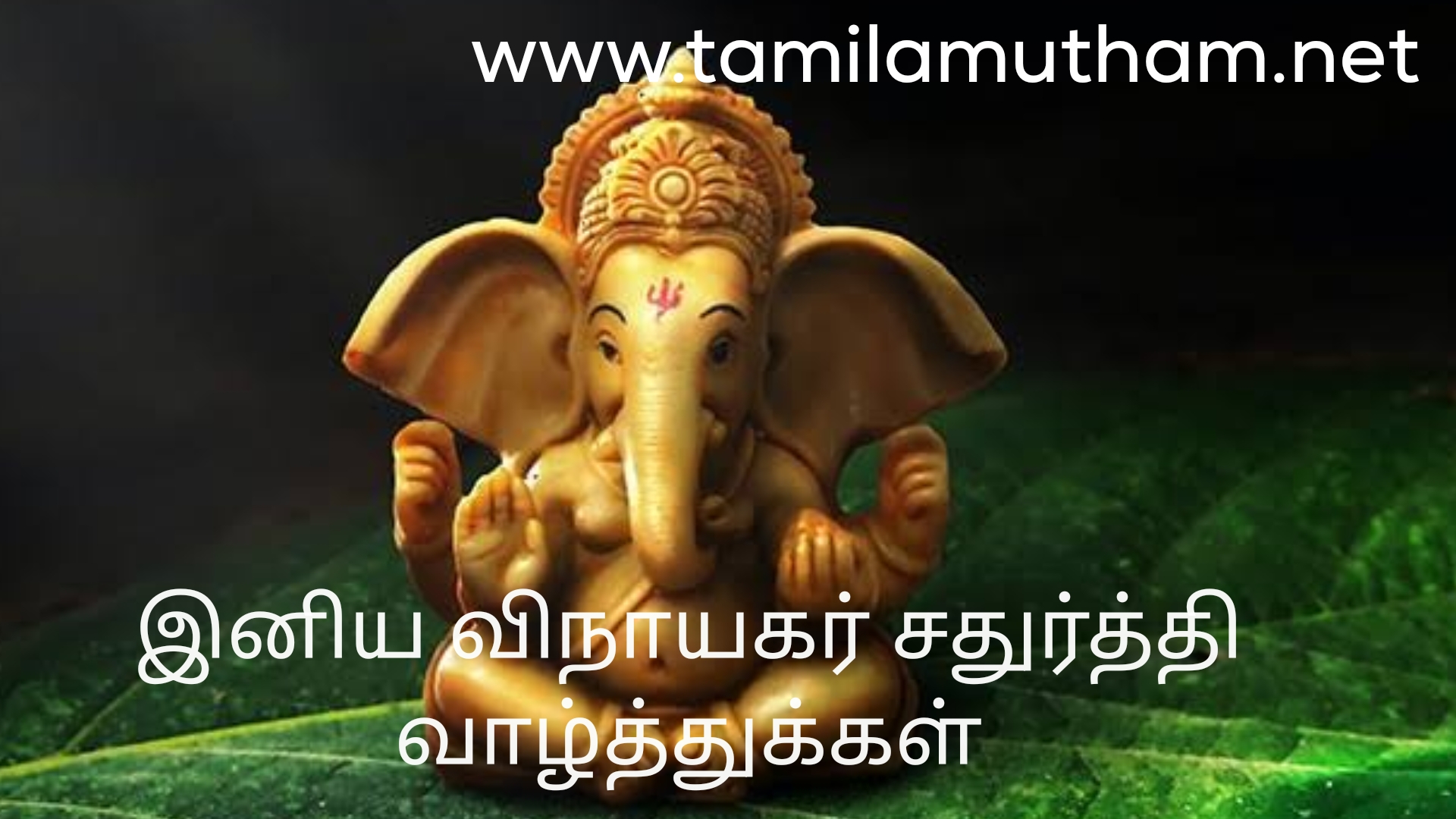DAM REHABILITATION AND IMPROVEMENT PROJECT (DRIP) / அணை மறுசீரமைப்பு மற்றும் மேம்பாட்டுத் திட்டம் (டிஆர்ஐபி)
TAMIL
- உலக வங்கியின் நிதியுதவியுடன் மத்திய நீர் ஆணையத்தால் (CWC) 2012 இல் இந்தத் திட்டம் தொடங்கப்பட்டது.
- 2021 இல், 4 மாநிலங்கள் மட்டுமே இந்தத் திட்டத்தின் ஒரு பகுதியாக இருந்தன – மத்தியப் பிரதேசம், ஒரிசா, கேரளா மற்றும் தமிழ்நாடு
- மேலும் 3 மாநிலங்கள்/அமைப்புகள் இந்த மறுவாழ்வு திட்டத்தில் இணைந்தன: கர்நாடகா, உத்தராஞ்சல் ஜல் வித்யுத் நிகாம் லிமிடெட் மற்றும் தாமோதர் பள்ளத்தாக்கு கார்ப்பரேஷன்
- இந்தத் திட்டம் ஆரம்பத்தில் 6 வருட காலப்பகுதியுடன் தொடங்கப்பட்டது, ஆனால் பின்னர் மேலும் 2 ஆண்டுகளுக்கு ஜூன் 2020 வரை விரிவாக்கப்பட்டது.
- திட்டத்தின் மொத்த செலவு ரூ. 2100 கோடிகள் (2012) மற்றும் இரண்டாம் மற்றும் மூன்றாம் கட்டங்களுக்கு ஒதுக்கப்பட்ட தொகை ரூ. 10,211 கோடி
- திட்டம் 2020 இல், டிஆர்ஐபி கட்டம் II மற்றும் III உடன், ஒத்த நோக்கங்களுடன், ஆனால் பெரிய அளவில் தொடங்கப்பட்டது
- 225 அணைகள் புனரமைப்பு மற்றும் பாதுகாப்பு நடவடிக்கைகளின் அடிப்படையில் மேம்படுத்தப்பட்டன
டிஆர்ஐபியின் நோக்கங்கள்
- அணை மறுசீரமைப்பு மற்றும் மேம்பாட்டுத் திட்டம், இந்தியாவில் உள்ள அணைகளின் செயல்பாடு மற்றும் பாதுகாப்பை மேம்படுத்துவதற்காக, பல நோக்கங்களுடன் தொடங்கப்பட்டது.
- அணைகள் மற்றும் தொடர்புடைய உபகரணங்களின் மறுசீரமைப்பு மற்றும் மேம்பாடு
- பங்கேற்கும் மாநிலங்கள் மற்றும் CWC இல் அணை பாதுகாப்பு நிறுவன வலுப்படுத்துதல்
- திட்ட மேலாண்மை
அணை புனரமைப்பு மற்றும் மேம்பாட்டுத் திட்டத்தின் தேவை என்ன?
- அணை மறுசீரமைப்பு மற்றும் மேம்பாட்டுத் திட்டம் (டிஆர்ஐபி) என்பது இந்தியாவில் உள்ள அணைகளின் பராமரிப்பு மற்றும் செயல்பாட்டை மேம்படுத்த மத்திய அமைச்சரவையால் எடுக்கப்பட்ட ஒரு முக்கியமான முயற்சியாகும்.
- அணையின் செயல்பாட்டின் அடிப்படையில் சீனா மற்றும் அமெரிக்காவிற்கு அடுத்தபடியாக இந்தியா மூன்றாவது நாடாக இருப்பதால் இந்த திட்டம் முக்கியத்துவம் வாய்ந்தது. இந்தியாவில் 5000 க்கும் மேற்பட்ட அணைகள் இயங்கி வருகின்றன, மேலும் 400+ அணைகள் இந்தியாவில் இன்னும் கட்டுமானத்தில் உள்ளன.
- இந்திய நீர்த்தேக்கங்களும் நம் நாட்டின் பொருளாதார வளர்ச்சிக்கு முக்கிய ஆதாரமாக உள்ளன, எனவே அவற்றைப் பாதுகாப்பது நாட்டிற்கு மிகவும் முக்கியமானது.
கட்டம் – 1
- இந்திய அரசு, உலக வங்கியின் நிதியுதவியுடன் அணை மறுசீரமைப்பு மற்றும் மேம்பாட்டுத் திட்டத்தை (டிஆர்ஐபி) ஏப்ரல் 2012 இல் தொடங்கியது.
- தற்போதுள்ள தேர்ந்தெடுக்கப்பட்ட அணைகளின் பாதுகாப்பு மற்றும் செயல்பாட்டு செயல்திறனை மேம்படுத்துவதுடன், அணை பாதுகாப்பு நிறுவனத்தை வலுப்படுத்துவதும் அமைப்பு பரந்த மேலாண்மை அணுகுமுறையுடன் நோக்கமாக இருந்தது.
- இது ஒரு மத்திய அங்கத்துடன் கூடிய மாநிலத் துறை திட்டமாகும். ஏழு மாநிலங்களில் (ஜார்கண்ட், கர்நாடகா, கேரளா, மத்தியப் பிரதேசம், ஒடிசா, தமிழ்நாடு மற்றும் உத்தரகாண்ட்) அமைந்துள்ள 223 அணைகளுக்கு 10 அமலாக்க முகமைகள் கப்பலில் உள்ளன.
- CWC (மத்திய நீர் ஆணையம்) ஒட்டுமொத்த ஒருங்கிணைப்பு மற்றும் மேற்பார்வையில் ஒப்படைக்கப்பட்டது.
- அணை ஆரோக்கியம் மற்றும் மறுவாழ்வு கண்காணிப்பு விண்ணப்பம் (DHARMA) எனப்படும் இணைய அடிப்படையிலான கருவி அனைத்து அணைகளுக்கும் முக்கியமான தரவுகளைப் படம்பிடித்து, புனர்வாழ்வு நெறிமுறைகளின் சரியான கண்காணிப்பு மற்றும் மேம்பாட்டிற்குப் பயன்படுத்த உருவாக்கப்பட்டது.
- தற்போதுள்ள நீர் சொத்துக்களை புத்திசாலித்தனமாக நிர்வகிக்க அணை பாதுகாப்பில் செயற்கை நுண்ணறிவை (AI) பயன்படுத்துவதற்கான ஒரு படி இது.
- இந்தத் திட்டம் மார்ச் 2021 இல் வெற்றிகரமாக மூடப்பட்டது.
டிஆர்ஐபி கட்டம் – 2 மற்றும் கட்டம் – 3
- டிஆர்ஐபியின் வெற்றியின் அடிப்படையில், ஜல் சக்தி அமைச்சகம் மற்றொரு வெளிப்புற நிதியுதவி திட்டமான டிஆர்ஐபி கட்டம் II மற்றும் கட்டம் III ஆகியவற்றைத் தொடங்கியது.
- இத்திட்டம் அக்டோபர் 2020 இல் அங்கீகரிக்கப்பட்டது.
- இதில் 19 மாநிலங்கள் மற்றும் 3 மத்திய ஏஜென்சிகளின் பங்கு உள்ளது. இத்திட்டம் 10 ஆண்டுகள் மற்றும் இரண்டு கட்டங்களாக செயல்படுத்தப்படும், ஒவ்வொன்றும் ஆறு ஆண்டுகள், இரண்டு ஆண்டுகள் ஒன்றுடன் ஒன்று.
- 736 அணைகள் புனரமைப்புடன் கூடிய பட்ஜெட் செலவினம் ரூ 10,211 கோடி (கட்டம் II: ரூ 5107 கோடி; கட்டம் III: ரூ 5104 கோடி) ஆகும்.
முக்கியத்துவம்
- நாட்டில் உள்ள அணைகளின் எண்ணிக்கை
- 5334 பெரிய அணைகள் செயல்பாட்டில் உள்ள சீனா மற்றும் அமெரிக்காவிற்கு அடுத்தபடியாக உலக அளவில் இந்தியா மூன்றாவது இடத்தில் உள்ளது. மேலும், தற்போது சுமார் 411 அணைகள் கட்டப்பட்டு வருகின்றன. பல ஆயிரம் சிறிய அணைகளும் உள்ளன.
- இந்த அணைகள் நாட்டின் நீர் பாதுகாப்பை உறுதி செய்வதற்கு இன்றியமையாதவை. இந்திய அணைகள் மற்றும் நீர்த்தேக்கங்கள் ஆண்டுதோறும் சுமார் 300 பில்லியன் கன மீட்டர் தண்ணீரை சேமிப்பதன் மூலம் நாட்டின் பொருளாதார மற்றும் விவசாய வளர்ச்சியில் முக்கிய பங்கு வகிக்கின்றன.
- காலநிலை மாற்றத்தை சமாளிக்க உதவும்
- பாசன விவசாயத்தை நம்பியிருக்கும் மில்லியன் கணக்கான இந்தியர்களின் வாழ்வாதாரம் மற்றும் உணவுப் பாதுகாப்பை நிலைநிறுத்துவதன் மூலமும், நிலத்தடி நீரை உறிஞ்சுவதில் இருந்து விவசாயிகள் வெளியேறுவதற்கும் உதவுவதன் மூலம், ஆற்றல் நுகர்வு மற்றும் பசுமை இல்ல வாயு வெளியேற்றத்தைக் குறைக்கிறது.
- வெள்ளம் தணிப்பு
- இந்தியாவில் வெள்ளத்திற்கான சராசரி ஆண்டு செலவு US$7.4 பில்லியன் என மதிப்பிடப்பட்டுள்ளது.
- வெள்ளத்தைத் தணிப்பதில் பல அணைகள் முக்கியமானவை. அவர்களின் தோல்வி கீழ்நிலை சமூகங்களுக்கு கடுமையான அபாயங்களை ஏற்படுத்தலாம்.
- அணைகளின் முதுமை
- ஐக்கிய நாடுகள் சபையின் (UN) அறிக்கையின்படி, “வயதான நீர் உள்கட்டமைப்பு: வளர்ந்து வரும் உலகளாவிய ஆபத்து”, இந்தியாவில் உள்ள 1,000 பெரிய அணைகள் 2025 ஆம் ஆண்டில் தோராயமாக 50 ஆண்டுகள் பழமையானதாக இருக்கும்.
- இந்தத் திட்டம் குறிப்பாக அணைகள் உடைவதால் ஏற்படும் அபாயங்களைக் குறைப்பதிலும், தேர்ந்தெடுக்கப்பட்ட அணைகளின் கீழ்பகுதியில் அமைந்துள்ள மக்கள், ஆற்றங்கரை சூழலியல் மற்றும் சொத்துக்களின் பாதுகாப்பை உறுதி செய்வதிலும் கவனம் செலுத்துகிறது.
- நாட்டில் அணை பாதுகாப்பு கலாச்சாரத்தை மேம்படுத்துதல்
- முன்மொழியப்பட்ட அணைப் பாதுகாப்புச் சட்டத்தில் குறிப்பிடப்பட்டுள்ள பல முக்கியமான நடவடிக்கைகளை விரிவாகக் கையாள, இந்திய அணை உரிமையாளர்கள் தங்கள் மனித வளங்களைத் தயார்படுத்திக்கொள்ள இது உதவும்.
- வேலைவாய்ப்பு உருவாக்கம்
- இது திறமையற்ற தொழிலாளர்களுக்கு தோராயமாக 10,00,000 நபர் நாட்களுக்கும், பணிபுரியும் நிபுணர்களுக்கு 2,50,000 நபர் நாட்களுக்கும் சமமான வேலை வாய்ப்புகளை உருவாக்க வாய்ப்புள்ளது.
அணை பாதுகாப்பு சட்டம்
- அணை பாதுகாப்பு மசோதா 2019 நாடு முழுவதும் உள்ள குறிப்பிட்ட அணைகளின் கண்காணிப்பு, ஆய்வு, செயல்பாடு மற்றும் பராமரிப்புக்கான ஒரு நிறுவன பொறிமுறையை அமைக்க முயல்கிறது.
- அணைப் பாதுகாப்புக்கான தேசியக் குழு அமைக்கப்பட்டு, மத்திய நீர் ஆணையத்தின் தலைவர் தலைமை தாங்குவார்.
- தேசிய அணை பாதுகாப்பு ஆணையத்தை மத்திய அரசு நியமிக்கும் வகையில், கூடுதல் செயலர் பதவிக்குக் குறையாத அதிகாரி தலைமையில் அமைக்கப்படுவதையும் இந்த மசோதா கருதுகிறது.
- முன்மொழியப்பட்ட சட்டம் ஒரு மாநில அணை பாதுகாப்பு அமைப்பை அமைக்கவும், அதன் செயல்பாடுகளை நிரந்தர கண்காணிப்பு, ஆய்வு, அணைகளின் செயல்பாடு மற்றும் பராமரிப்பு, அனைத்து அணைகளின் தரவுத்தளத்தை வைத்திருத்தல் மற்றும் அணைகளின் உரிமையாளர்களுக்கு பாதுகாப்பு நடவடிக்கைகளை பரிந்துரைத்தல் ஆகியவை அடங்கும்.
- இந்த மசோதா இரண்டு வகையான குற்றங்களுக்கு வழங்குகிறது – ஒரு நபரின் செயல்பாடுகளை நிறைவேற்றுவதில் தடங்கல் மற்றும் முன்மொழியப்பட்ட சட்டத்தின் கீழ் வழங்கப்பட்ட வழிகாட்டுதல்களுக்கு இணங்க மறுப்பது.
ENGLISH
- The project was launched in 2012 by the Central Water Commission (CWC) with the financial aid of the World Bank
- In 2021, only 4 states were a part of this project: Madhya Pradesh, Orissa, Kerala, and Tamil Nadu
- Moving forward, 3 more states/organisations joined this rehabilitation program: Karnataka, Uttaranchal Jal Vidyut Nigam Limited, and Damodar Valley Corporation
- The project was initially launched with a duration of 6 years but was later expanded further for another 2 years, till June 2020
- The total cost of the project was Rs. 2100 crores (2012) and the amount allocated for Phase II and III is Rs. 10,211 crore
- The project was launched in 2020, with DRIP Phase II and III, with similar objectives, but at a larger scale
- There were 225 dams which were covered for rehabilitation and improvement in terms of safety measures
Objectives of DRIP
- The Dam Rehabilitation and Improvement Project was started off with multiple objectives, mainly to improvise the functioning and safety of dams in India.
- Rehabilitation and Improvement of dams and associated appurtenances
- Dam Safety Institutional Strengthening in participating States and CWC
- Project Management
What was the need for the Dam Rehabilitation and Improvement Project?
- The Dam Rehabilitation and Improvement Project (DRIP) is an important initiative taken by the Union cabinet to improve the maintenance and operation of dams in India.
- The project holds significance as India is the third country, after China and the United States of America, in terms of the dam’s operation. There are over 5000 dams which are operating in India and 400+ dams which are still under construction in India.
- Indian reservoirs are also an important source of economic growth in our country and thus preserving them is of utmost importance for the country.
Phase – I
- The Government of India, with financial assistance from the World Bank initiated the Dam Rehabilitation and Improvement Project (DRIP) in April 2012.
- The objective was to improve the safety and operational performance of selected existing dams along with dam safety institutional strengthening with a system wide management approach.
- It was a State Sector Scheme with a Central component. It had rehabilitation provision for 223 dams located in seven States (Jharkhand, Karnataka, Kerala, Madhya Pradesh, Odisha, Tamil Nadu and Uttarakhand) with 10 Implementing Agencies on board.
- The CWC (Central Water Commission) had been entrusted with overall coordination and supervision.
- A web-based tool called Dam Health and Rehabilitation Monitoring Application (DHARMA) has been developed to capture important data for all dams and use it for appropriate monitoring and development of rehabilitation protocols.
- This is a step to move towards application of Artificial Intelligence (AI) in dam safety to smartly manage existing water assets.
- The Scheme successfully closed in March 2021.
DRIP Phase-II and Phase III
- Based on the success of DRIP, the Ministry of Jal Shakti initiated another externally funded Scheme DRIP Phase II and Phase III.
- The scheme was approved in October 2020.
- It has the participation of 19 States and 3 Central Agencies. The Scheme is 10 years duration and will be implemented in two Phases, each of six years’ duration, with two years’ overlap.
- The budget outlay is Rs 10,211 Cr (Phase II: Rs 5107 Cr; Phase III: Rs 5104 Cr) with rehabilitation provision of 736 dams.
Significance
- Number of Dams in the Country
- India ranks third globally after China and the United States of America, with 5334 large dams in operation. In addition, about 411 dams are under construction at present. There are also several thousand smaller dams.
- These dams are vital for ensuring the water security of the Country. Indian dams and reservoirs play an important role in the economic and agricultural growth of the country by storing approximately 300 billion cubic meter of water annually.
- Will Help in Tackling Climate Change
- By sustaining the livelihoods and food security of millions of Indians who depend on irrigated agriculture and enabling farmers to shift out of pumping groundwater, thereby, reducing energy consumption and greenhouse gas emissions.
- Flood Mitigation
- With average annual cost of floods in India estimated at US$7.4 billion, many dams are critical in mitigating floods. Their failure could pose serious risks to downstream communities.
- Ageing of Dams
- According to a United Nations (UN) report “Ageing water infrastructure: An emerging global risk”, over 1,000 large dams in India will be roughly 50 years old in 2025 and such ageing embankments across the world pose a growing threat.
- This Scheme is especially focused on mitigating the risks of dam failure and ensuring safety of people, riverine ecology and property located downstream of the selected dams.
- Enhancing Culture of Dam Safety in the Country
- It will equip the Indian dam owners to gear up their human resources to comprehensively handle many important activities envisaged in proposed Dam Safety Legislation.
- Employment Generation
- It is likely to generate employment opportunities equivalent to approximately 10,00,000 person days for unskilled workers, and 2,50,000 person days for working professionals.
Dam Safety Legislation
- Dam safety Bill 2019 seeks to set up an institutional mechanism for surveillance, inspection, operation and maintenance of specified dams across the country.
- The National Committee on Dam Safety will be constituted and will be chaired by the Chairperson, Central Water Commission.
- The Bill also envisages setting up of a National Dam Safety Authority to be headed by an officer not below the rank of an Additional Secretary, to be appointed by the central government.
- The proposed legislation also envisages constituting a State Dam Safety Organisation whose functions will be to keep perpetual surveillance, inspection, monitoring the operation and maintenance of dams, keeping a database of all dams, and recommending safety measures to owners of dams.
- The Bill provides for two types of offences – obstructing a person in the discharge of his functions, and refusing to comply with directions issued under the proposed law.
KALAPANI TERRITORY ISSUE / கலாபானி பிரதேச பிரச்சினை
TAMIL
கலாபானி எங்கே அமைந்துள்ளது?
- உத்தரகாண்டின் பித்தோராகர் மாவட்டத்தின் கிழக்கு மூலையில் அமைந்துள்ளது.
- கிழக்கு மற்றும் தெற்கில் சீனா மற்றும் நேபாளத்தின் திபெத் தன்னாட்சிப் பகுதியுடன் வடக்கில் ஒரு எல்லையைப் பகிர்ந்து கொள்கிறது.
- இது லிம்பியாதுரா, லிபுலேக் மற்றும் கலாபானிக்கு இடையில் உள்ளது.
- இப்பகுதி நேபாளத்திற்கும் இந்தியாவிற்கும் இடையிலான மிகப்பெரிய பிராந்திய தகராறு ஆகும், இது உயரமான இமயமலையில் குறைந்தது 37,000 ஹெக்டேர் நிலங்களைக் கொண்டுள்ளது.
பகுதியைக் கட்டுப்படுத்துவது யார்?
- இப்பகுதி இந்தியாவின் கட்டுப்பாட்டில் உள்ளது, ஆனால் வரலாற்று மற்றும் வரைபட காரணங்களால் நேபாளம் இப்பகுதியை உரிமை கொண்டாடுகிறது.
சர்ச்சைக்கான காரணம் என்ன?
- காலாபானி பகுதி காளி நதியிலிருந்து அதன் பெயரைப் பெற்றது. கூர்க்கா போர்/ஆங்கிலோ-நேபாளப் போருக்குப் பிறகு காத்மாண்டுவின் கூர்க்கா ஆட்சியாளர்களுக்கும் கிழக்கிந்தியக் கம்பெனிக்கும் இடையே கையெழுத்தான சுகௌலி உடன்படிக்கையைத் தொடர்ந்து நேபாள இராச்சியத்தின் எல்லைக் குறியீடாக மாறியதால், இப்பகுதிக்கான நேபாளத்தின் உரிமைகோரல்கள் இந்த நதியை அடிப்படையாகக் கொண்டவை. 1814-16). இந்த ஒப்பந்தம் 1816 இல் அங்கீகரிக்கப்பட்டது.
- ஒப்பந்தத்தின்படி, நேபாளம் மேற்கில் குமாவோன்-கர்வால் மற்றும் கிழக்கில் சிக்கிம் பகுதிகளை இழந்தது.
- பிரிவு 5 இன் படி, நேபாள மன்னர் காளி நதியின் மேற்கில் உள்ள பகுதியின் மீதான தனது உரிமைகளை கைவிட்டார், இது உயர் இமயமலையில் உருவாகி இந்திய துணைக்கண்டத்தின் பெரிய சமவெளிகளில் பாய்கிறது.
- ஒப்பந்தத்தின்படி, காளி நதியின் கிழக்கே விழுந்த பகுதிக்கு நேபாளத்தின் உரிமையை பிரிட்டிஷ் ஆட்சியாளர்கள் அங்கீகரித்தனர்.
தற்போதைய சிக்கல்கள்
- நேபாள வல்லுனர்களின் கூற்றுப்படி, காளி நதியின் கிழக்கே நதியின் மூலத்திலிருந்து தொடங்க வேண்டும். அவர்களின் கூற்றுப்படி மூலமானது லிம்பியாதுராவுக்கு அருகிலுள்ள மலைகளில் உள்ளது, இது நதியின் மற்ற ஓட்டத்தை விட உயரத்தில் உள்ளது.
- நேபாளம் லிம்பியாதுராவில் தொடங்கி கீழ்நோக்கி முழு நீளத்தின் கிழக்கே விழும் மலைகளின் உயரமான நிலப்பரப்பு தங்களுடையது என்று கூறுகிறது.
- மறுபுறம் இந்தியா கூறும் எல்லை காலாபானியில் தொடங்குகிறது என்று இந்தியா கூறுகிறது.
- நதியின் தோற்றம் மற்றும் அதன் பல்வேறு துணை நதிகள் மலைகள் வழியாகப் பிரிந்து செல்வது பற்றிய மாறுபட்ட விளக்கம் காரணமாக இந்த சர்ச்சை முக்கியமாக உள்ளது.
- காளிக்கு கிழக்கே உள்ள நிலப்பரப்பு நேபாளத்தின் உரிமைகோரல் லிம்பியாதுராவின் தோற்றம் சார்ந்ததாக இருந்தாலும், இந்த நதி உண்மையில் கலாபானிக்கு அருகில் காளி என்ற பெயரைப் பெறுகிறது என்று இந்தியா கூறுகிறது.
தற்போதைய நிலை என்ன?
- நேபாளம் காளியின் லிம்பியாதுரா மூலத்திலிருந்து முக்கோணப் பகுதியின் வடகிழக்கில் உள்ள காலாபானி மற்றும் லிபுலேக் கணவாய் வரையிலான நிலப்பரப்பை தனது பிரதேசமாக இணைத்து திருத்தப்பட்ட அதிகாரப்பூர்வ வரைபடத்தை வெளியிட்டுள்ளது.
- கடந்த ஆண்டு பிரதமர் கே.பி. ஷர்மா ஒலி வரைபடத்திற்கு அரசியலமைப்பு அந்தஸ்து வழங்குவதற்கான அரசியலமைப்பு திருத்தப் பிரேரணையை பதிவு செய்தார்.
- அரசியலமைப்பு உத்தரவாதம் காத்மாண்டுவின் நிலையை வளைந்துகொடுக்காததாக மாற்றும் என்பதால், இந்த நடவடிக்கை காலாபானி பிரச்சினையில் எதிர்கால தீர்வை சாத்தியமற்றதாக்குகிறது என்று இந்திய பார்வையாளர்கள் கூறுகின்றனர்.
ENGLISH
Where is Kalapani located?
- Located in the easternmost corner of Uttarakhand’s Pithoragarh district.
- Shares a border on the north with the Tibet Autonomous Region of China and Nepal in the east and south.
- It is wedged in between Limpiyadhura, Lipulekh and Kalapani.
- The area is the largest territorial dispute between Nepal and India consisting of at least 37,000 hectares of land in the High Himalayas.
Who controls the area?
- The area is in India’s control but Nepal claims the region because of historical and cartographic reasons.
What is the cause of the dispute?
- The Kalapani region derives its name from the river Kali. Nepal’s claims to the region is based on this river as it became the marker of the boundary of the kingdom of Nepal following the Treaty of Sugauli signed between the Gurkha rulers of Kathmandu and the East India Company after the Gurkha War/Anglo-Nepal War (1814-16). The treaty was ratified in 1816.
- According to the treaty, Nepal lost the regions of Kumaon-Garhwal in the west and Sikkim in the east.
- According to Article 5, the King of Nepal gave up his claims over the region west of the river Kali which originates in the High Himalayas and flows into the great plains of the Indian subcontinent.
- According to the treaty, the British rulers recognised Nepal’s right to the region that fell to the east of the river Kali.
Present issues
- According to Nepal’s experts, the east of the Kali river should begin at the source of the river. The source according to them is in the mountains near Limpiyadhura, which is higher in altitude than the rest of the river’s flow.
- Nepal claims that a land mass, high in the mountains that falls to the east of the entire stretch starting from Limpiyadhura downwards, is theirs.
- India on the other hand says the border begins at Kalapani which India says is where the river begins.
- The dispute is mainly because of the varying interpretation of the origin of the river and its various tributaries that slice through the mountains. While Nepal’s claim of the territory east of Kali is based on the Limpiyadhura origin, India says the river actually takes the name Kali near Kalapani.
What is the current position?
- Nepal has published a revised official map incorporating the territory from the Limpiyadhura source of the Kali to Kalapani and Lipulekh pass in the northeast of the triangular region as its territory.
- Last year, the Cabinet led by Prime Minister K.P. Sharma Oli registered a constitution amendment motion to grant constitutional status to the map.
- Indian observers say this move makes any future solution on the Kalapani issue nearly impossible as a constitutional guarantee will make Kathmandu’s position inflexible.
ONE NATION ONE OMBUDSMAN / ஒரே நாடு ஒரு குறைதீர்க்கும் திட்டம்
TAMIL
- ஒரே நாடு ஒரு குறைதீர்க்கும் திட்டம் இந்திய ரிசர்வ் வங்கி – ஆர்பிஐ பிப்ரவரி 5, 2021 அன்று அறிவிக்கப்பட்டது.
- வங்கி, வங்கி அல்லாத நிதி நிறுவனங்கள் மற்றும் டிஜிட்டல் பரிவர்த்தனைகளில் நுகர்வோர் குறைகளை நிவர்த்தி செய்வதற்கு அர்ப்பணிக்கப்பட்ட பிரத்யேக குறைதீர்க்கும் திட்டங்கள் நாடு முழுவதும் அமைந்துள்ள RBI இன் 22 ஆம்புட்ஸ்மேன் அலுவலகங்களில் இருந்து செயல்படுகின்றன.
- நுகர்வோர் பாதுகாப்பு தொடர்பான உலகளாவிய முன்முயற்சிகளுக்கு ஏற்ப, ஒழுங்குபடுத்தப்பட்ட நிறுவனங்களின் குறை தீர்க்கும் பொறிமுறையை வலுப்படுத்த ரிசர்வ் வங்கி பல்வேறு முயற்சிகளை எடுத்துள்ளது.
- ‘ஒரே நாடு ஒரு குறைதீர்க்கும் திட்டம்’ என்பது, மாற்று தகராறு நிவர்த்தி பொறிமுறையை எளிமையாகவும், ஒழுங்குபடுத்தப்பட்ட நிறுவனங்களின் வாடிக்கையாளர்களுக்கு மிகவும் பதிலளிக்கக்கூடியதாகவும் மாற்றுவதற்கான ஒரு அணுகுமுறையாகும், மற்றவற்றுக்கு இடையே, மூன்று ஒம்புட்ஸ்மேன் திட்டங்களை ஒருங்கிணைக்க முடிவு செய்யப்பட்டுள்ளது.
- ரிசர்வ் வங்கி புகார் மேலாண்மை அமைப்பு போர்ட்டலை ஒரே ஒரு தீர்வாக செயல்படுத்தியது. ஒழுங்குபடுத்தப்பட்ட நிறுவனங்களால் தீர்க்கப்படாத வாடிக்கையாளர் புகார்களின் மாற்று தகராறு தீர்வுக்காக இந்த போர்டல் பயன்படுத்தப்படும்.
- வங்கிகள், NBFCகள் மற்றும் PPI களின் வங்கி அல்லாத வழங்குபவர்கள் தங்கள் புகார்களை ஒருங்கிணைந்த திட்டத்தின் கீழ் பதிவு செய்ய, ஒரு மையப்படுத்தப்பட்ட குறிப்பு புள்ளியுடன், குறைகளை நிவர்த்தி செய்வதற்கான செயல்முறையை எளிதாக்கும் வகையில் இந்தத் திட்டம் உள்ளது. இந்தியாவில் உள்ள வங்கிகளின் வகைகளைப் பற்றி ஆர்வமுள்ளவர்கள் கொடுக்கப்பட்ட இணைப்பில் படிக்கலாம்.
- அதிகார வரம்புகள் முழுவதும் நிதி நுகர்வோர் பாதுகாப்பு குறிப்பிடத்தக்க கொள்கை முன்னுரிமையைப் பெற்றுள்ளது மற்றும் ரிசர்வ் வங்கி அதற்கான முயற்சிகளை எடுத்து வருகிறது. ஜூன் 2021ல் இ-ஒருங்கிணைந்த ஒம்புட்ஸ்மேன் திட்டத்தை வெளியிட ரிசர்வ் வங்கி இலக்கு வைத்துள்ளது.
ஒம்புட்ஸ்மேன் என்றால் என்ன?
- ஒம்புட்ஸ்மேன் என்பது பொது அமைப்புகளுக்கு எதிராக சாதாரண மக்கள் செய்யும் புகார்களைக் கையாளும் ஒரு அரசு அதிகாரி.
- இந்த கருத்து ஸ்வீடனில் இருந்து வந்தது.
- ஒரு சேவை அல்லது நிர்வாக அதிகாரத்திற்கு எதிரான புகார்களைக் கையாள சட்டமன்றத்தால் நியமிக்கப்பட்ட அதிகாரி என்று பொருள். இந்தியாவில், பின்வரும் துறைகளில் உள்ள குறைகளைத் தீர்ப்பதற்காக அரசாங்கம் ஒரு குறைதீர்ப்பாளரை நியமித்துள்ளது.
- இன்சூரன்ஸ் ஒம்புட்ஸ்மேன்
- வருமான வரி குறைதீர்ப்பாளர்
- வங்கி ஒம்புட்ஸ்மேன்
- விண்ணப்பதாரர்கள் இணைக்கப்பட்ட பக்கத்தில் இந்திய வங்கி சாத்தியில் உள்ள BCM- வங்கி நிருபர்களைப் பற்றி விரிவாகப் படிக்கலாம்.
ஒரே நாடு ஒரு குறைதீர்க்கும் திட்டத்தின் முக்கியத்துவம்
- வாடிக்கையாளர்களின் குறைகளை எளிதாகப் பதிவு செய்யவும், நிவர்த்தி செய்யவும் இது உதவும்.
- குறை தீர்க்கும் பொறிமுறையின் கூறுகள் என்ன என்பதை அறிய, இணைக்கப்பட்ட கட்டுரையைப் பார்வையிடவும்.
- வங்கிகள், NBFCகள் மற்றும் வங்கி அல்லாத ப்ரீபெய்டு கொடுப்பனவுகள் வழங்குபவர்களில் வாடிக்கையாளர் சேவையை மேம்படுத்துவதற்கான சரியான திசையில் இது ஒரு படியாகும். இணைக்கப்பட்ட பக்கத்தில் வங்கி அல்லாத நிதி நிறுவனங்களின் வகைகளைப் பற்றி படிக்கவும்.
- ஒரே நாடு ஒரு குறைதீர்ப்பாளன் மூலம், மூன்று திட்டங்களுக்கு எதிராக ஒரே குறைதீர்ப்பாளரின் கீழ் நுகர்வோர் குறைகளை நிவர்த்தி செய்வதை RBI நோக்கமாகக் கொண்டுள்ளது.
- ஒன் நேஷன் ஒன் ரேஷன் கார்டு திட்டத்தை (ONORC) போன்று அதிக செயல்திறனையும் வேகத்தையும் கொண்டு வர இது ஒரு பெரிய படியாகும்.
ENGLISH
- One Nation One Ombudsman Scheme was announced by the Reserve Bank Of India – RBI on 5th February 2021.
- There are dedicated ombudsman schemes devoted to consumer grievance redressal in banking, non-bank finance companies and digital transactions, respectively, are in operation from 22 ombudsman offices of the RBI located across the country.
- In line with the global initiatives on consumer protection, RBI has taken various initiatives to strengthen the Grievance Redress Mechanism of regulated entities.
- The adoption of the ‘One Nation One Ombudsman is an approach to make the alternate dispute redressal mechanism simpler and more responsive to the customers of regulated entities, it has been decided to implement, inter alia, integration of the three Ombudsman schemes in one.
- The RBI had operationalised the complaint management system portal as a one-stop solution. This portal will be used for the alternate dispute resolution of the customer complaints which are not resolved by regulated entities.
- The Scheme is intended to make the process of redress of grievances easier by enabling the customers of the banks, NBFCs and non-bank issuers of PPIs to register their complaints under the integrated scheme, with one centralised reference point. Aspirants can read about the types of Banks in India on the given link.
- Financial consumer protection has gained significant policy priority across jurisdictions and the RBI has been taking a slew of initiatives on the same.
- The RBI is targeting to roll out the e-integrated ombudsman scheme in June 2021.
What is an Ombudsman?
- An ombudsman is a government official who deals with complaints made by ordinary people against public organizations. This concept came from Sweden. It means an officer appointed by the Legislature to handle complaints against a service or administrative authority. In India, the Government has appointed an Ombudsman to resolve grievances in the following sectors.
- Insurance Ombudsman
- Income Tax Ombudsman
- Banking Ombudsman
- Candidates can read in detail about BCM- Banking Correspondents in India Bank Saathi on the linked page.
One Nation One Ombudsman Scheme Significance
- It will help in easy lodging of customer grievances and redressal. To know what are the components of a Grievance Redressal Mechanism, visit the linked article.
- It is a step in the right direction for improving the customer service in banks, NBFCs and Non-Bank Prepaid Payments Issuers. Read about types of Non-Banking Financial institutions on the linked page.
- Through One nation One Ombudsman, RBI aims to integrate consumer grievances redressal under a single ombudsman as against three schemes.
- It’s a big step to bring more effectiveness and speed similar to One Nation One Ration Card Scheme (ONORC).














